Taiwan Quinoa—An Ancient Native Variety
Liu Yingfeng / photos Jimmy Lin / tr. by Geoff Hegarty and Sophia Chen
January 2015
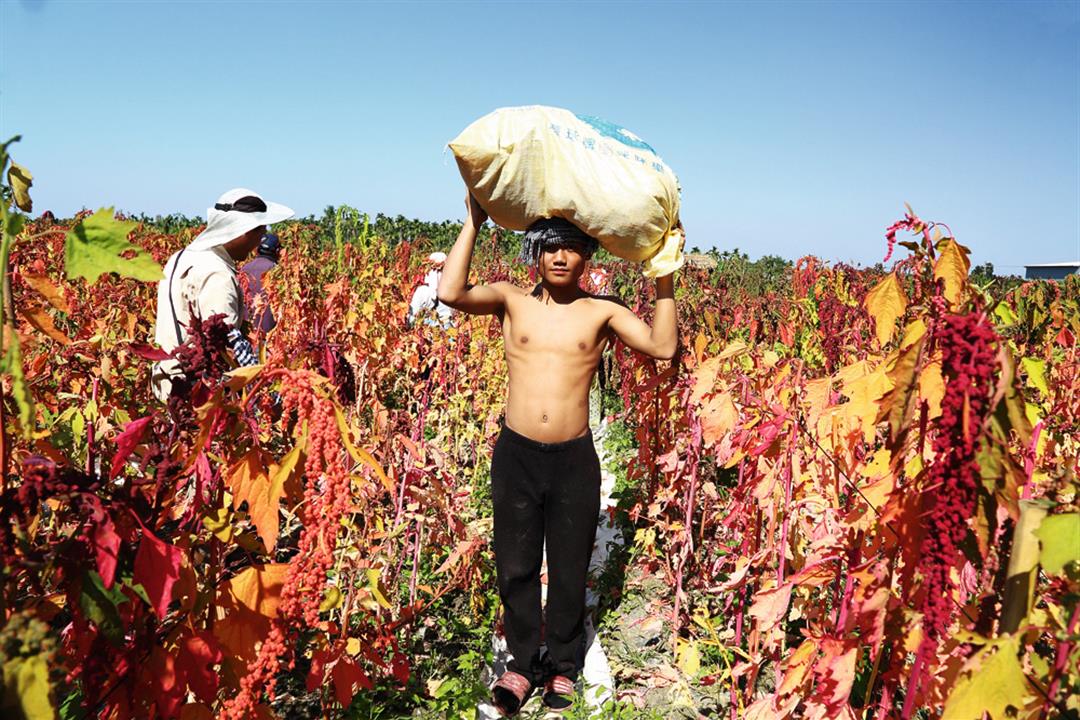
South American quinoa has become known worldwide as a fad food, a health diet for celebrities, and a source of nutrition with a potential role in global food security. But not many people know that Taiwan has its own native quinoa, traditionally cultivated by the island’s indigenous peoples.
This is a centuries-old red and yellow grain, and like a bright gem, it adds to significantly to Taiwan’s ecological diversity. But it also played an unforeseen role in restoring the homeland traditions and practices of the nation’s Aboriginal tribes after the disaster of Typhoon Morakot.
With a rise in the popularity of healthy foods, quinoa has become a stayer. Originating in the Andes Mountains of South America, its high nutritional value has earned it the title of a superfood. And it has been well received by not only the rich and famous: with the world facing endangered food security, the grain is also regarded as a possible “rescue food” by the UN because of its drought resistance and ease of growing. In Taiwan, red quinoa has been shown to be native to the region, with a history of cultivation going back at least a century.
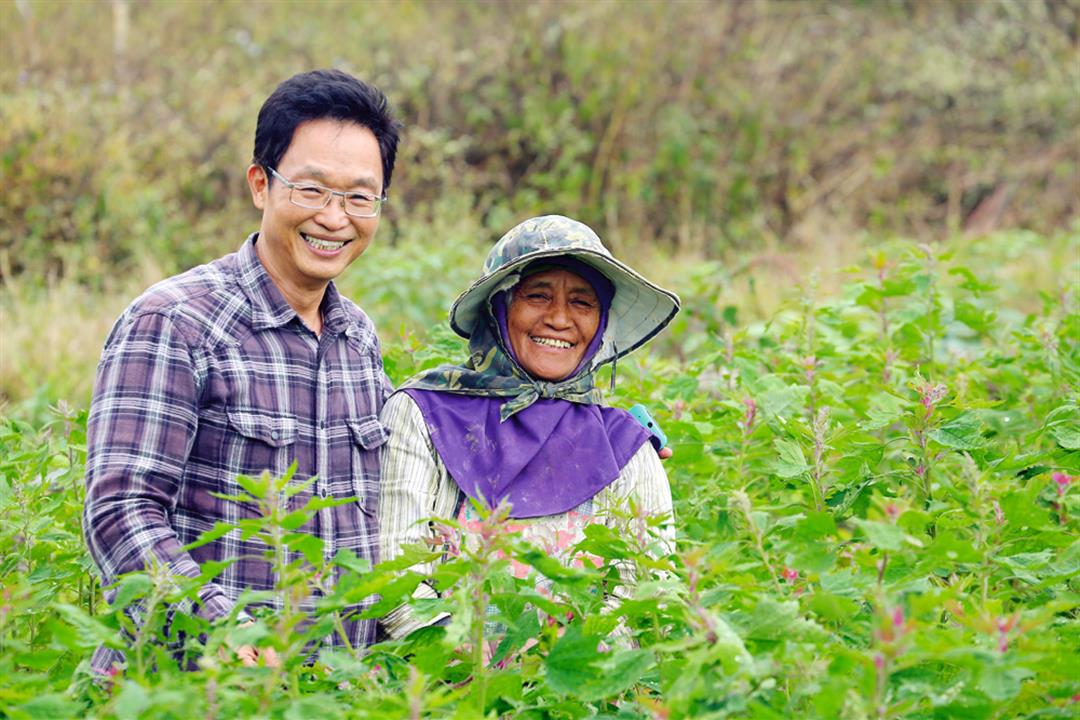
Hsieh Chen-chang (left), general manager of Kullku Co., encouraged and guided Aboriginal communities to grow red quinoa. The farmers are happy watching their crops change from green to red.
The mystery
A project to uncover the origins of Taiwan quinoa was commissioned in 2008 by the Forestry Bureau of the Council of Agriculture (COA). Kuo Yau-lun, professor in the Department of Forestry at National Pingtung University of Science and Technology (NPUST), says that red quinoa is a common food of Taiwan’s Aboriginal peoples. In earlier years when food was scarce, Aborigines often carried the highly nutritious red quinoa with them when they went hunting in the mountains. However, because they tended to move around, they found that other crops such as millet and taro were more accessible. Red quinoa, though tolerant to dry conditions and easy to grow, was a minor part of their diet. Even today, red quinoa isn’t planted on a large scale, so few of the younger Aboriginal people are familiar with its benefits.
Even Kuo, an acknowledged specialist in Taiwan’s unique biodiversity, came to know red quinoa only through one of his students, Lin Zhizhong. In 2005 Kuo took over as director of the Biodiversity Research Center at NPUST, and began research into issues of biodiversity in the Kaohsiung and Pingtung region. It was then that he began focusing on red quinoa.
Kuo notes that at that time there was no relevant academic data about red quinoa. The only reference they could find was a short report by Kuo Chin-cheng, a researcher at the COA’s Taitung District Agricultural Research and Extension Station. So Kuo Yau-lun and his research team went to colleges and museums in the US, Britain, and the Netherlands to compare botanical specimens. After three years, one of the team members, Yang Yuen-bo, professor in the Department of Biological Sciences at National Sun Yat-sen University, found a specimen in Kyoto University’s Herbarium whose morphology and features matched Taiwan quinoa.
Red quinoa had been known under a number of names. As early as 1940, Japanese researchers concluded that the variety was native to Taiwan and named it Chenopodium formosanum. With the rediscovery of this research, red quinoa, with its bright colors and unusual features, which had been mistakenly regarded as an exotic, was again recognized as a native species.
This research not only contributed significantly to knowledge of Taiwan’s ecological diversity; it also uncovered a little-known fact. In 1918, Taiwan experienced severe hardship brought by drought and very cold weather, and many people found it difficult to survive due to poor harvests on the plains. The Aboriginals of the southern regions of Taiwan, however, pulled through the famine mainly because they relied on red quinoa to survive. Today when the world is in urgent need of finding solutions for global food security issues, it is important to realize that Taiwan quinoa rescued a generation nearly a century ago.
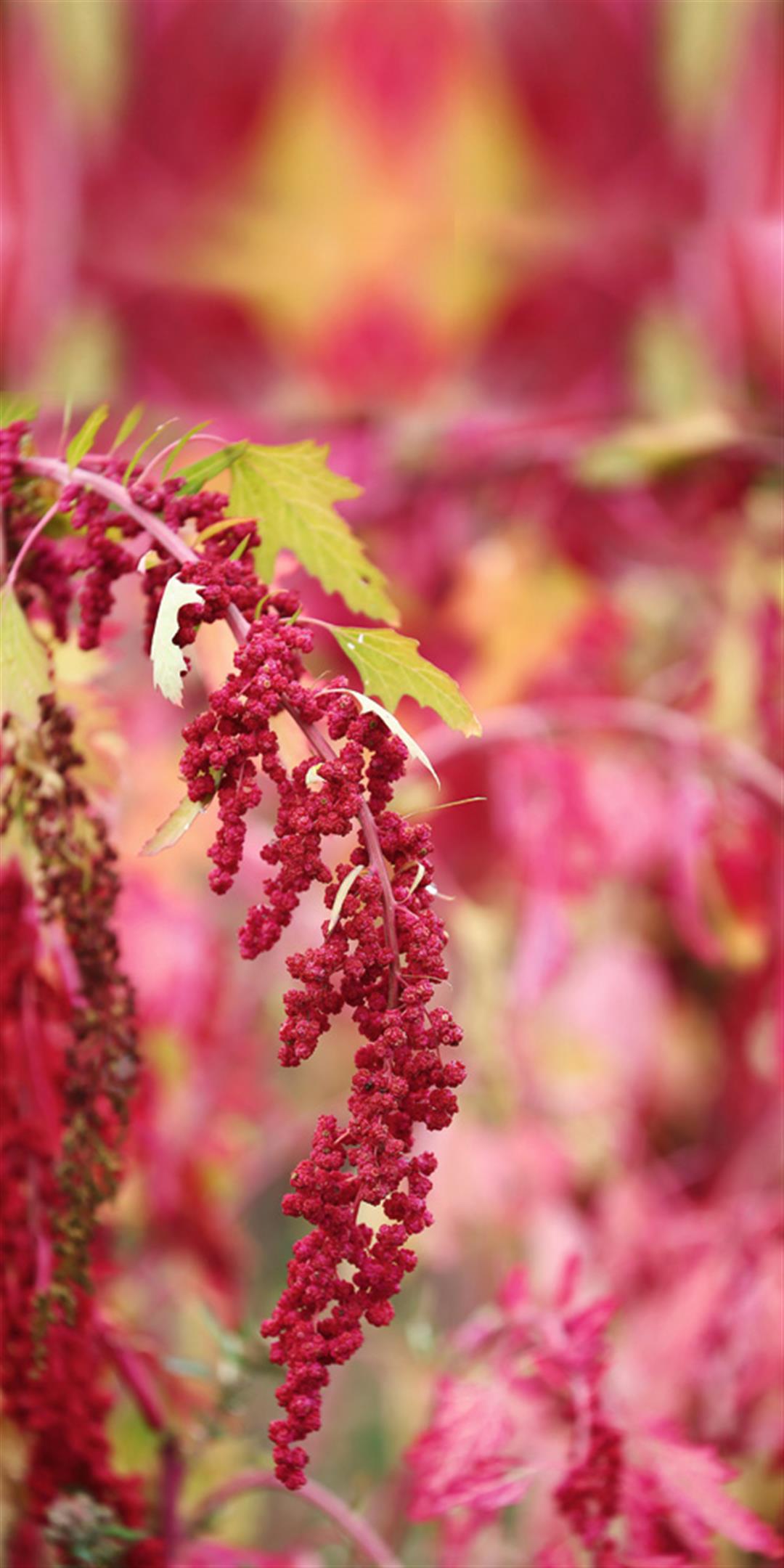
At one time regarded as an exotic, red quinoa was once again recognized as a native Taiwanese species following research by a team at National Pingtung University of Science and Technology.
To the world
Thanks to NPUST’s research, red quinoa has gradually become better known, and government and private research institutions have put some effort into its promotion. In 2014, Wu Mei-mao, founder of Taiwan Way, registered four varieties of Taiwan native seeds—red quinoa, millet, glutinous millet and maqaw (Litsea cubeba, “mountain pepper”)—in the catalogue of the Ark of Taste, a project of the Slow Food Foundation for Biodiversity. Thus Taiwan quinoa is gaining exposure with the international community.
Wu had been a research associate at the Development Center for Biotechnology, but she changed her focus to promoting organic farming in 2001 after she discovered that she was suffering from cancer. Then in 2008 she gave up her job, and two years later founded social enterprise Taiwan Way. Over the years, Wu became committed to bringing the concepts of organic and earth-friendly farming to Aboriginal communities. She has thus gained the title of “tribal mother.” One well-known story is of the help she gave to the Amis village of Talampo in Fuli Township, Hualien County, to change to organic farming. Talampo is nicknamed “the dark village,” as the people there have always lived without electric power.
In 2008, when Wu was invited to Jinfeng Township in Taitung County to share her experiences in assisting Aboriginal communities, she saw a large field of colorful red quinoa, and after a brief introduction to its properties, became deeply impressed by the species.
At that time, organic produce retail chain Leezen Co. was looking around for opportunities to develop new products from traditionally cultivated varieties. The company had recently worked with Kiwit Village in Hualien County to produce roselle fruit, a project initiated by Wu Mei-mao. So Leezen again looked to Wu for advice. Recalling her vision of red quinoa growing in Taitung, she and the company advised farmers in Taitung and Hualien to try growing organic red quinoa.
In 2013 at the Taiwan Good Food Association Conference, Wu met Guo Youzhen, a postgraduate student at the University of Gastronomic Sciences in the Piedmont region of Italy. The meeting provided an opportunity for Wu to attend Slow Food’s biennial conference in Turin in 2014, the culmination of a series of coincidences. After meeting Wu, Guo adapted Wu’s story for a case study examining Taiwan Way’s assistance to Taiwan’s Aboriginal communities. The news spread to the committee of Slow Food, which decided to invite Wu to attend the Slow Food Conference to share her experiences. Red quinoa thus made its entrance onto the world stage, providing the first glimpse for the global community of this “new” crop from Taiwan.
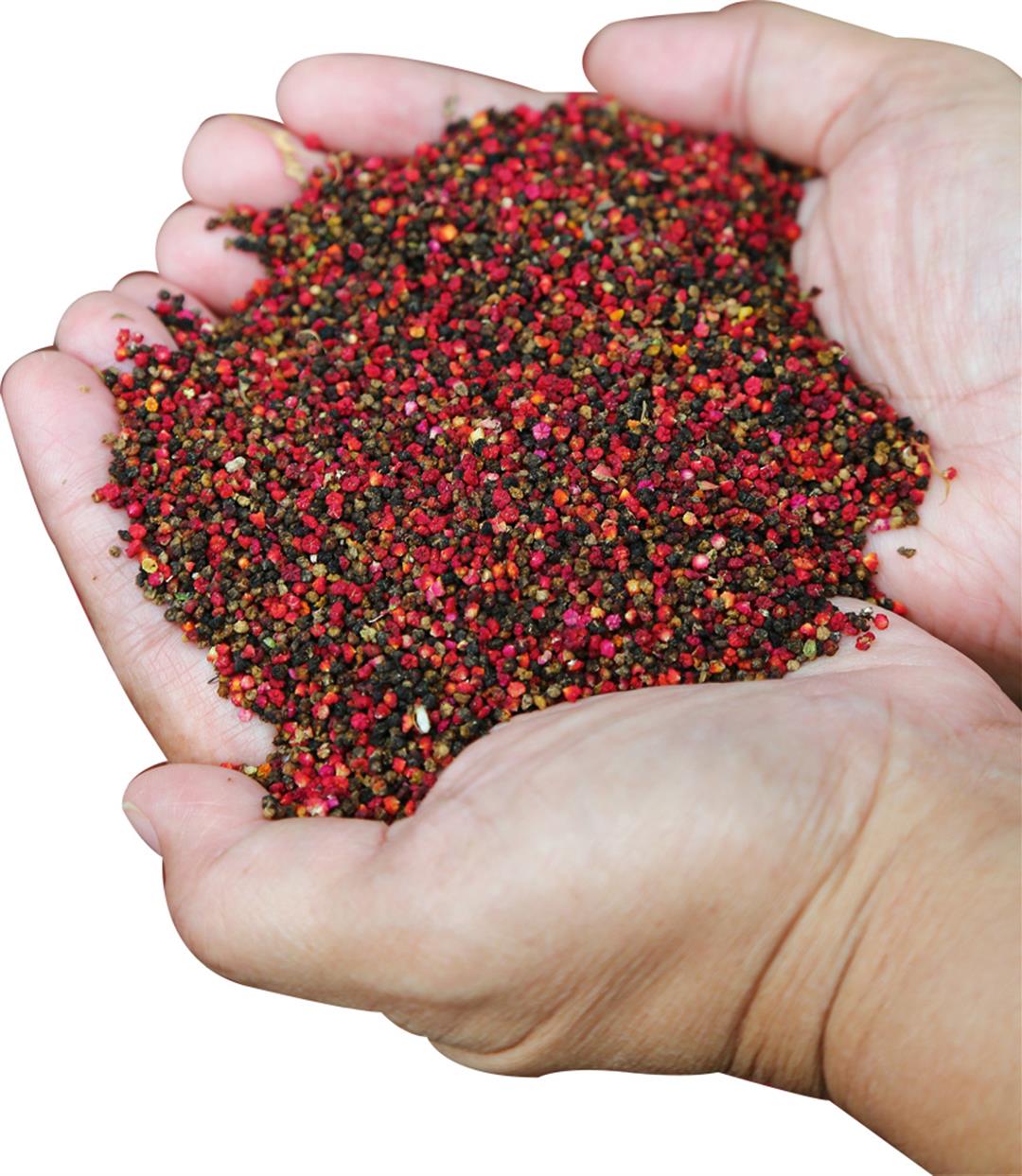
After harvesting, red quinoa is processed in 12 complex steps including sun-drying and grading.
Reviving tribal economies
In 2009, Typhoon Morakot hit hard in the Kaohsiung and Pingtung region. Many Aboriginal communities lost their homes and were forced to move to new areas. But their traditional crop of red quinoa once again came to the rescue, initiating a revival of the Aboriginal tribal economy.
In 2012, Hsieh Chen-chang, general manager of organic farm operator Kullku Co., made contracts with a number of Aboriginal villages in Pingtung and Taitung to grow red quinoa. Hsieh’s wife is Aboriginal, so he had long known about red quinoa through his wife’s Paiwan tribe background. Four years ago, he retired from a logistics operation, intending to invest in agriculture. He recalled the fine qualities of red quinoa, and thus became one of a few pioneer investors in Taiwan red quinoa.
After the devastation of Typhoon Morakot in 2009, the displacement affecting Aboriginal communities created both emotional and economic gloom. Song Jinshan recalls one sad occasion. He had been involved in 921 Earthquake reconstruction work in Xinyi Township, Nantou County. After Typhoon Morakot, he became project manager in the front line of reconstruction work for the Baihe community in Changzhi Township, Pingtung County. Six villages—a total of over 250 households—moved into the new community, but less than half a year later, 37 of the new residents had passed away. The impact of the disaster, exacerbated by homesickness, had been too much for them to bear.
The reconstruction team tried hard to heal their pain. In 2013, through the Pingtung County Department of Agriculture, Song heard about Hsieh’s plan to invest in planting red quinoa. Song proposed a plan of cooperation, and hoped that through a system of contracted farming, the new residents of Baihe would rediscover the original “flavor” of their hometown.
Ba Qingyi, one of the residents, is 80 years old. After the disaster, he left the mountain with many of his tribespeople to live in the new community. At the beginning, he wasn’t happy, but after starting work with red quinoa, his spirit revived. His son Ba Wenxiong retired from military service and went home to look after his father. He says that a smile returned to his father’s face, and he became more energetic after planting red quinoa. They also delighted in the fact that red quinoa, which in their childhood memories was used to brew wine, had such a high nutritional and economic value.
As the global popularity of quinoa swells, Taiwan quinoa is also becoming increasingly popular on the domestic market. Many people are becoming involved in production, including farmers from Duoliang Township in Taitung, Namaxia Township in Kaohsiung, and Xinyi Township in Nantou. After the cooperative project with Hsieh, the Original-Love Woodworking Workshop, in addition to cultivating red quinoa, expanded its use of traditional Aboriginal handicrafts in packaging red quinoa products, highlighting the values of Aboriginal life.
While global health and food security remain two of the most concerning issues in today’s world, the growing knowledge of Taiwan quinoa has overcome the ignorance of the past, and the grain is fast becoming a new star in 21st-century cuisine. With its bright red and yellow coloring, Taiwan quinoa’s ability to flourish in dry, barren soil seems somehow to symbolize its vitality.
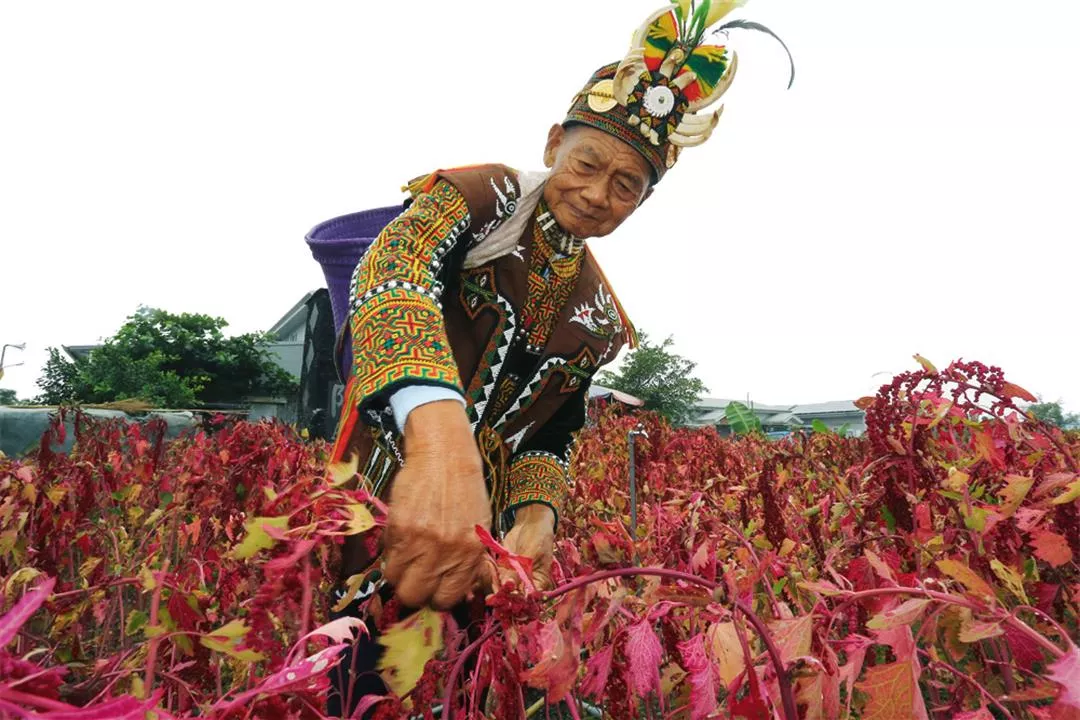
With a long tradition for Taiwan’s Aboriginal people, red quinoa has helped a number of communities get back on their feet after the devastation of Typhoon Morakot. The photo shows Ba Qingyi from Adiri Village harvesting red quinoa.

@List.jpg?w=522&h=410&mode=crop&format=webp&quality=80)




